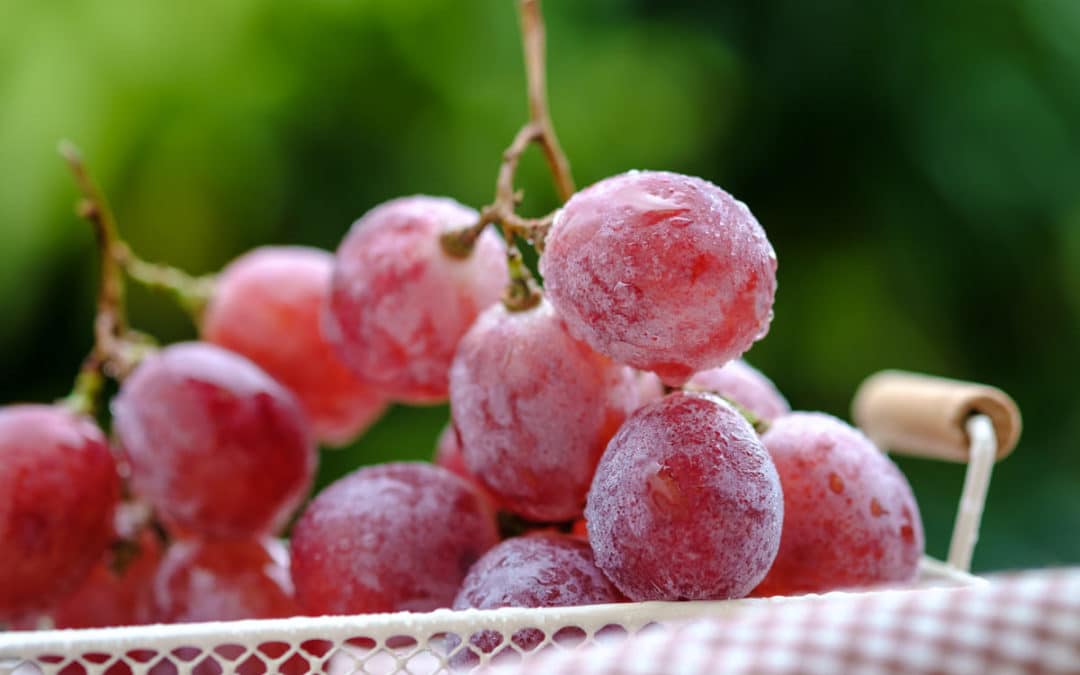When grapes remain on the vine longer, the sugar content increases. In many instances, vineyard managers intentionally delay picking certain varieties to produce sweeter dessert-type wines.
Here are three sweet wine categories that many enjoy:
Ice Wine: What is It?
Traditionally, ice wine has been produced from grapes harvested at a temperature around 20°F and immediately pressed while still frozen. Naturally, these productions occurred where colder winter conditions occurred like Canada, Austria, Germany, and the very northern parts of the United States.
The most common grape varieties used to make ice wines are Riesling, Vidal Blanc, Chenin Blanc, Gewürztraminer, and Cabernet Franc.
The grapes are harvested while still solid, then, while still rock hard, rushed to the winery for immediate pressing.
This newly pressed liquid is very sweet, measuring a sugar level somewhere between 32 to 46 Brix. By comparison, grapes for typical red wines produce juice that measures about 22 to 25 Brix.
As a result of the ultra-high Brix levels, the juice requires three to six months to ferment properly. When finished, the ice wine is about 10% ABV (alcohol by volume level) and measures up to 220 grams per liter of sugar. By comparison, a standard Coca-Cola is one-half as sweet!
It is not difficult to imagine the origin of ice wine, given the unpredictability of Mother Nature and the challenges of growing wine grapes in colder climates. A sudden cold spell or a late harvest can find a vineyard owner with frozen grapes. One early winter in 1794, vintners in Franken, Germany, decided to create a product using only the frozen grapes remaining on their vines. The result was a high sugar, nicely flavored wine that they labeled “eiswein.”
Wineries in Wine Country California use a somewhat different strategy for their ice wines, since their lowest, sustained ambient temperatures will not ”hard-freeze” the grapes sufficiently. Instead, these wineries achieve a similar result by harvesting then mechanically freezing the grapes before moving them to the presses.
Raisin Wines
Whether dried on the vine or after harvest, raisin wines are popular in many areas of Europe.
Dubbed “straw wines” because the grapes were initially dried and aged on straw mats before processing, the raisins are used in Spain for making high-quality Sherry. Regions of Northern Italy (Vin Santo), France (Vin de Paille), Greece, and Cyprus (Commandaria) also produce versions of excellent raisin wines.
“Noble Rot”
Not a great-sounding title, but some highly preferred dessert wines fall into this category. When white grapes varieties develop a fungus named Botrytis cinerea, they create highly concentrated sugar content as much of the grape mass disappears. Bordeaux Sauternes are highly prized, and some German Sweet Rieslings, Loire Valley Chenin Blancs, and Hungarian Tokaj are now famous dessert wines
Wine Tours in Napa Valley and Sonoma County
To learn firsthand about winemaking and enjoy a safe and fun winetasting experience, reserve your place for a private or join-in outing with Platypus Wine Tours.
Visitors can arrange their Private or Group tours of Wine Country California in Napa Valley or Sonoma County with Platypus Wine Tours by completing the reservation request form on the Platypus website.
If you have questions about any Tour Package, phone Platypus Wine Tours at 1-707-253-2723.


